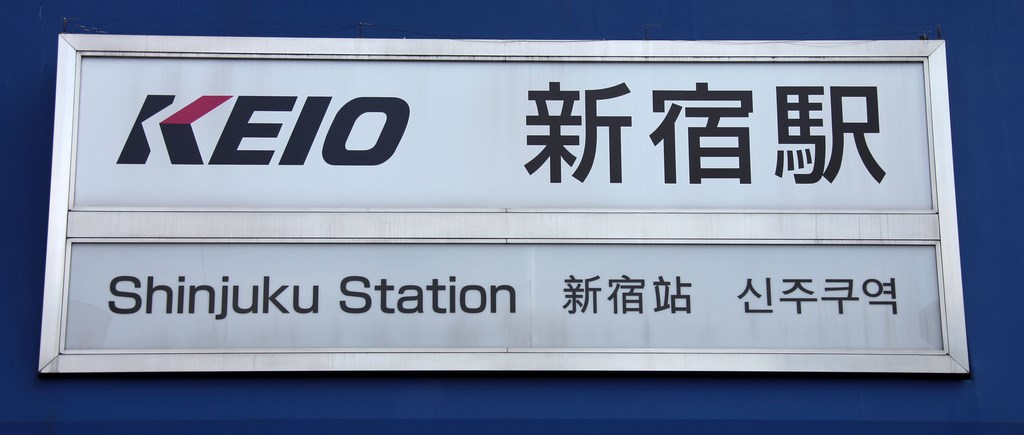GARE FERROVIAIRE DE SHINJUKU
La gare de Shinjuku (新宿駅, Shinjuku-eki) est une gare ferroviaire majeure de la ville de Tokyo au Japon.
Elle est située dans les arrondissements de Shinjuku et Shibuya. Cette gare est fréquentée en moyenne par 3,64 millions de passagers par jour (chiffres 2007), ce qui en fait la première gare du monde en termes d'usagers. Elle est la principale connexion entre le centre de Tōkyō et les banlieues ouest de la ville et relie le métro, les trains régionaux et les trains de la JR East. En incluant le métro, la gare comporte plus de 200 sorties. En termes de superficie, il s'agit de la deuxième plus grande gare du monde après la gare de Nagoya.
--------------------------------------------
Shinjuku Station (新宿駅 Shinjuku-eki) is a major railway station in Shinjuku and Shibuya wards in Tokyo, Japan. Serving as the main connecting hub for rail traffic between central Tokyo and its western suburbs on inter-city rail, commuter rail, and metro lines, the station was used by an average of 3.64 million people per day in 2007, making it, by far, the world's busiest transport hub (and registered as such with Guinness World Records). The station has 36 platforms. Including an underground arcade, there are well over 200 exits.
History
Shinjuku Station opened in 1885 as a stop on Japan Railway's Akabane-Shinagawa line (now part of the Yamanote Line). Shinjuku was still a quiet community at the time and the station was not heavily trafficked at first. The opening of the Chūō Line (1889), Keiō Line (1915) and Odakyū Line (1923) led to increasing traffic through the station. Subway service began in 1959. In August 1967, a freight train carrying jet fuel bound for the U.S. air base in Tachikawa derailed and caught fire on the Chūō Rapid tracks.
The station was a major site for student protests in 1968 and 1969, the height of civil unrest in postwar Japan. On October 21, 1968, 290,000 marchers participated in International Anti-War Day taking over Shinjuku station and forcing trains to stop. In May and June, 1969, members of the antiwar group Beheiren carrying guitars and calling themselves "folk guerrillas" led weekly singalongs in the underground plaza outside the west exit of the station, attracting crowds of thousands. Participants described it as a "liberated zone" and a "community of encounter." In July, riot police cleared the plaza with tear gas and changed signs in the station to read "West Exit Concourse" instead of "West Exit Plaza." The incident represented a significant defeat for public activism in Tokyo.
There have been plans at various points in history to connect Shinjuku into the Shinkansen network, and the 1973 Shinkansen Basic Plan, still in force, specifies that the station should be the southern terminus of the Jōetsu Shinkansen line to Niigata. While construction of the Ōmiya-Shinjuku link never started and the Jōetsu line presently terminates in Tokyo Station, the right of way, including an area underneath the station, remains reserved.
On May 5, 1995, the Aum Shinrikyo doomsday cult attempted a chemical terrorist attack by setting off a cyanide gas device in a toilet in the underground concourse, barely a month after the gas attack on the Tokyo subway which killed 12 and injured thousands. This time the attack was thwarted by staff who extinguished the burning device.
